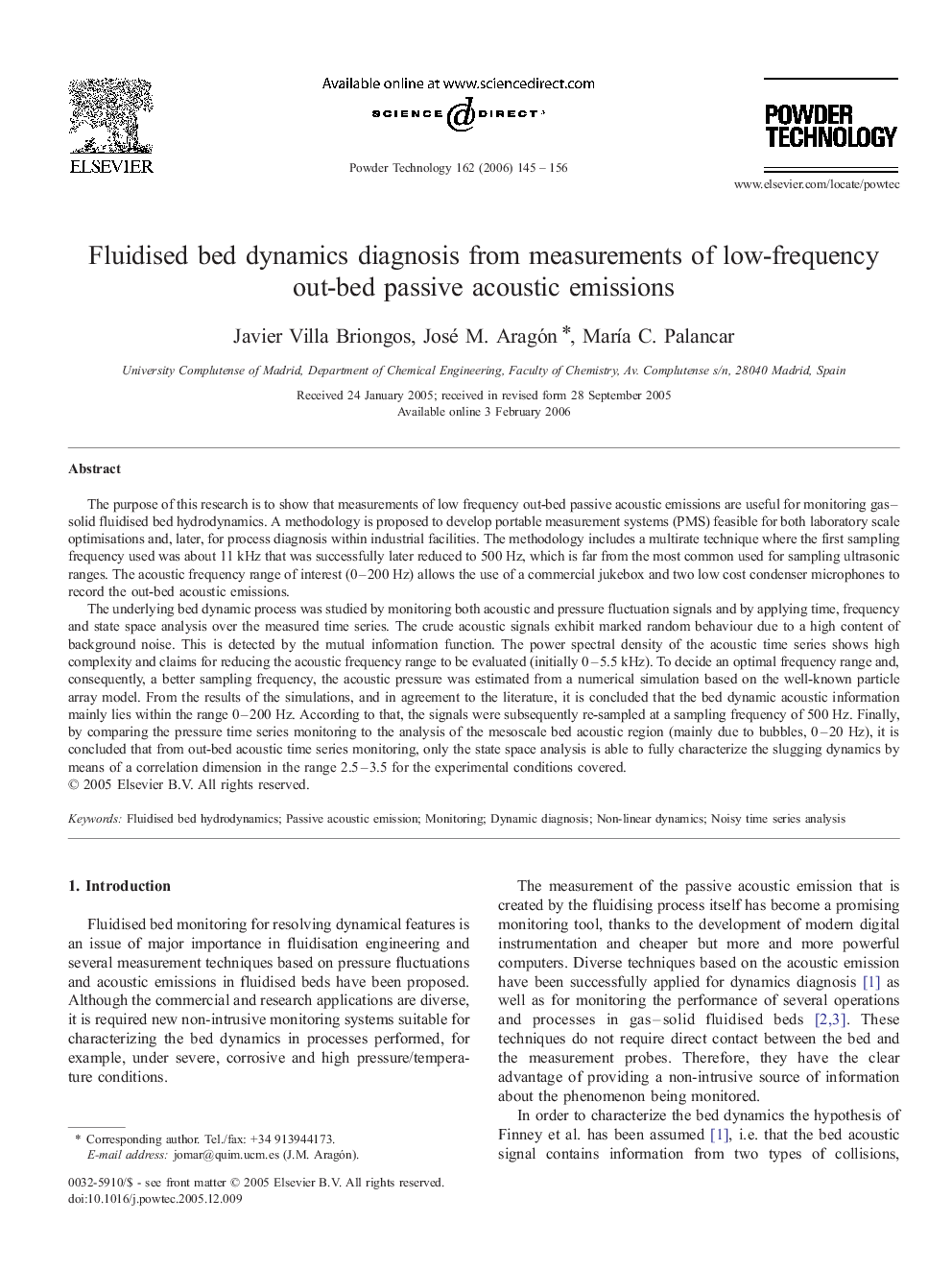| Article ID | Journal | Published Year | Pages | File Type |
|---|---|---|---|---|
| 239459 | Powder Technology | 2006 | 12 Pages |
The purpose of this research is to show that measurements of low frequency out-bed passive acoustic emissions are useful for monitoring gas–solid fluidised bed hydrodynamics. A methodology is proposed to develop portable measurement systems (PMS) feasible for both laboratory scale optimisations and, later, for process diagnosis within industrial facilities. The methodology includes a multirate technique where the first sampling frequency used was about 11 kHz that was successfully later reduced to 500 Hz, which is far from the most common used for sampling ultrasonic ranges. The acoustic frequency range of interest (0–200 Hz) allows the use of a commercial jukebox and two low cost condenser microphones to record the out-bed acoustic emissions.The underlying bed dynamic process was studied by monitoring both acoustic and pressure fluctuation signals and by applying time, frequency and state space analysis over the measured time series. The crude acoustic signals exhibit marked random behaviour due to a high content of background noise. This is detected by the mutual information function. The power spectral density of the acoustic time series shows high complexity and claims for reducing the acoustic frequency range to be evaluated (initially 0–5.5 kHz). To decide an optimal frequency range and, consequently, a better sampling frequency, the acoustic pressure was estimated from a numerical simulation based on the well-known particle array model. From the results of the simulations, and in agreement to the literature, it is concluded that the bed dynamic acoustic information mainly lies within the range 0–200 Hz. According to that, the signals were subsequently re-sampled at a sampling frequency of 500 Hz. Finally, by comparing the pressure time series monitoring to the analysis of the mesoscale bed acoustic region (mainly due to bubbles, 0–20 Hz), it is concluded that from out-bed acoustic time series monitoring, only the state space analysis is able to fully characterize the slugging dynamics by means of a correlation dimension in the range 2.5–3.5 for the experimental conditions covered.
